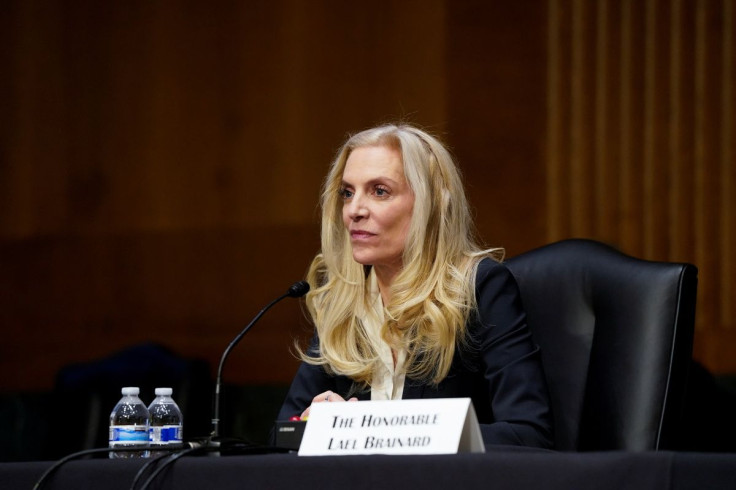Fed's Brainard: Rate Hikes, Balance Sheet Trim To Bring Down Inflation

The Federal Reserve will conduct a series of interest rate hikes and begin reducing its massive bond holdings as soon as June to help bring down inflation that hit a fresh 40-year-high in March, Fed Governor Lael Brainard said on Tuesday.
Getting inflation back down toward the Fed's 2% goal is the central bank's "most important task," Brainard told the Wall Street Journal in an interview. Consumer prices soared 8.5% in March, a government report showed on Tuesday.
Several of Brainard's fellow policymakers, including Fed Chair Jerome Powell, have signaled they may need to jack up interest rates in bigger-than-usual half-point increments to get policy more quickly to a neutral rate of about 2.4% so borrowing costs will at least no longer be stimulating growth.
The Fed raised rates last month to a target range of 0.25% to 0.5%, its first increase in three years, and said more rate hikes were ahead.
"In terms of exactly what the right pace of that set of increases in the policy rate from meeting to meeting, I don't really want to focus on that," Brainard told the Wall Street Journal in an interview.
But combined with a shrinking balance sheet, she said, rate hikes will "bring the policy stance to more neutral posture expeditiously later this year," she said.
The Fed next meets to set policy in early May, with five more meetings scheduled through December.
Policymakers are generally agreed on a plan to trim $95 billion monthly from their $9 trillion balance sheet, minutes from their March meeting show. That process over time should be the equivalent of raising the Fed's policy rate two or three times, Brainard said.
Russia's invasion of Ukraine has driven up food and energy prices, she noted, and "the longer the conflict persists -- the more it escalates -- the greater the potential risks, again, to the upside on inflation and to the downside on activity."
Sweeping lockdowns in China to deal with a surge in COVID-19 there could mean another inflationary shock if they tangle supply chains further, she said.
Even so, she said, she expects demand - and therefore inflation - to fall this year not just because of tighter policy but also because households will no longer have the extra fiscal support that government provided last year to cushion the pandemic blow.
She pointed to a moderation in inflation excluding food and energy, and particularly in what has been extremely strong core goods inflation, as a "welcome" signal in Tuesday's inflation report.
"I'll be looking to see whether we continue to see moderation in the months ahead," Brainard said.
Core inflation, which she said reflects the strength of domestic demand and helps her assess where policy should be, slowed in March to a 0.3% gain from February, with prices of core goods falling 0.4%, the biggest drop since April 2020.
SOFT LANDING?
Analysts and investors worry that if the Fed tightens policy too fast it could send the economy into a recession if businesses respond to higher borrowing costs and falling demand by slashing jobs.
Brainard said she doesn't necessarily see it going that way, given that job openings are at a near-record.
"I think there's quite a bit of capacity for labor demand to moderate among businesses by actually reducing job openings without necessitating high levels of layoffs," she said.
Meanwhile, she said, supply will have a chance to catch up "a bit" as workers return to the job market and producers work out kinks in the supply chain.
"I don't want to be too rigid in how I think about the appropriate course of policy over the remainder of this year and into next year," she said, noting that no one had anticipated the twin shocks to inflation from Russia's war and China's fresh lockdowns. "By moving expeditiously towards a more neutral posture, it provides the committee with optionality in either direction."
© Copyright Thomson Reuters {{Year}}. All rights reserved.





















